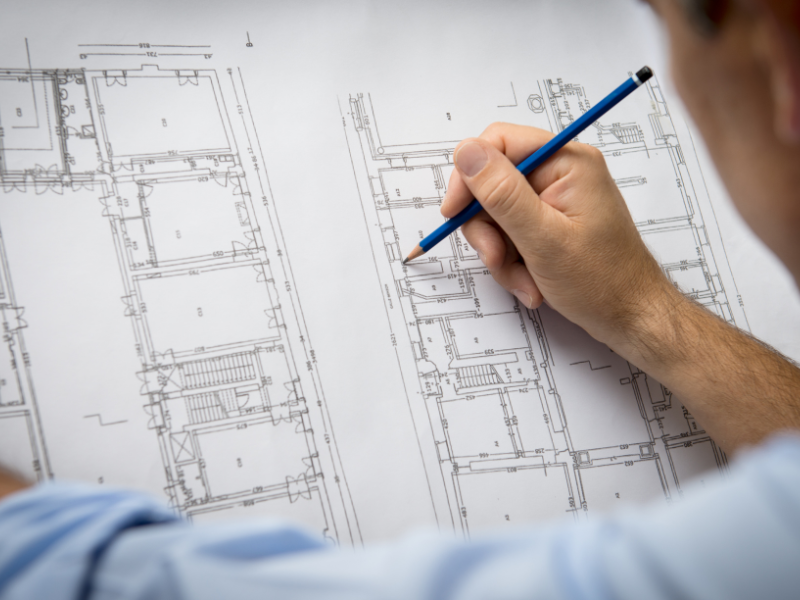Architect Collaboration Tips for Working with Contractors and Contractors
Architect Collaboration Tips for Working with Contractors and Contractors
Blog Article
Discover the Vital Abilities and Top Qualities Every Architect Should Possess
As an engineer, you understand that success in your area surpasses simply technical skills. It has to do with mixing imagination with practicality, cultivating collaboration, and handling jobs effectively. Each high quality plays an essential role in your capability to design areas that motivate and operate well. What are the details abilities that can truly establish you apart? Allow's discover the essential characteristics every Architect must grow to flourish in this ever-evolving career.
Creative Thinking and Innovation
Imagination and development go to the heart of design, driving the style of spaces that motivate and work effortlessly. As a designer, you'll require to think outside package, pushing borders to produce unique remedies for your clients. You'll constantly explore new products, methods, and modern technologies to improve your designs. Accepting technology suggests remaining in advance of fads while being adaptable to change.
You'll likewise attract motivation from different sources-- nature, art, and even day-to-day life can spark fresh concepts. This capability to blend creativity with usefulness allows you to deal with complex troubles, guaranteeing your layouts fulfill both practical and visual requirements.
Solid Interaction Skills
While making amazing spaces calls for imagination, strong communication skills are simply as essential for engineers. You require to convey your concepts plainly to customers, contractors, and team members. Listening is simply as vital; recognizing your customer's vision assists you produce styles that absolutely fulfill their demands.
You'll commonly need to discuss complicated principles in such a way that's very easy to grasp, whether you're presenting a proposition or reviewing materials. Reliable interaction cultivates cooperation, guaranteeing everyone gets on the same web page throughout the project.
Structure connections is necessary, also. When you establish count on and relationship, clients are most likely to share their concerns and comments, resulting in far better outcomes.
Finally, do not underestimate the power of body language and visual aids. They can boost your message and make your discussions much more engaging. Solid communication skills not only elevate your styles yet likewise reinforce your specialist partnerships in the architectural globe.
Technical Proficiency in Layout Software
As you browse the ever-evolving globe of style, mastering design software program becomes essential for translating your imaginative concepts right into concrete plans. Familiarizing on your own with programs like AutoCAD, Revit, and SketchUp will certainly not only improve your style capacities yet additionally improve your workflow. These devices permit you to develop thorough illustrations, 3D designs, and also simulations that can aid you picture and provide your concepts better.
Consistently upgrading your skills and exploring new functions can establish you apart from your peers, guaranteeing your layouts are accurate and ingenious. Eventually, technological efficiency in style software application is a cornerstone of successful design, assisting you bring your visions to life.
Understanding of Design Principles

Comprehending engineering principles additionally enables you to anticipate prospective challenges early in the layout process. When you recognize just how different materials behave under numerous conditions, you can make informed choices that improve your layouts. Your styles ought to not only be visually pleasing however lasting and also useful.
Additionally, a solid understanding of engineering principles enables you to introduce within constraints. You can press creative boundaries while still adhering to safety and security requirements. Ultimately, this understanding enhances your architectural practice and sets you apart in a competitive area.
Task Administration Abilities
Effective job monitoring capabilities are important for engineers, allowing you to supervise all facets of a task from perception to completion. You'll need to coordinate with various stakeholders, consisting of designers, professionals, and customers, ensuring every person's on the same web page. Setting clear goals, timelines, and budget plans is basic; it aids you keep the task on track and within range.
As an architect, you ought to likewise be proficient in jeopardy monitoring, recognizing possible issues before they intensify. Solid communication abilities are very important, permitting you to verbalize your vision and encourage your team. read more You'll gain from being arranged and detail-oriented, as this aids improve processes and avoid pricey hold-ups.
In addition, versatility is vital; tasks typically develop, and being adaptable allows you to react successfully to adjustments. Eventually, your task this post monitoring skills can considerably affect the success of your building undertakings, guaranteeing you provide top quality outcomes promptly and within spending plan.
Interest to Detail
While managing jobs is essential, your focus to information can make a considerable distinction in the top quality of your job. Every line you draw, every product you pick, and every tiny requirements you note contributes to the overall success of a task. You need to be meticulous, making certain that your layouts not only satisfy visual criteria yet also adhere to developing codes and laws.
Missing even a small information can cause costly modifications or safety and security problems down the line. By growing an eager eye for information, you enhance your capacity to find possible troubles prior to they intensify. This watchfulness not just conserves you time and sources but also constructs your reputation as a trusted Architect. Remember, it's usually the smallest details that elevate a task from great to phenomenal. Accept this ability, and allow it assist your design process, making certain that your vision is carried out faultlessly.
Flexibility and Problem-Solving Abilities
As an architect, you'll commonly encounter unexpected modifications in design and job needs. Your capacity to welcome these changes and find ingenious options is crucial for success. Remaining versatile in your strategy not just enhances your problem-solving skills however likewise keeps your jobs on track.
Accepting Modification in Layout
Welcoming modification in style is vital for architects, especially when here guiding progressing client needs and arising innovations. You need to grow flexibility, as jobs frequently move direction based on brand-new insights or constraints. Being open to transform enables you to discover ingenious approaches and produce remedies that resonate with your clients.
When faced with difficulties, your analytic skills enter into play. You'll often need to reconsider ideas and change strategies on the fly, making certain that the last result aligns with the customer's vision while satisfying safety and security and regulative standards. By being resourceful and flexible, you not just boost your designs but likewise construct trust with your customers, proving that you can browse the complexities of modern-day style efficiently.
Cutting-edge Solutions to Difficulties

Flexibility in Project Administration
While maneuvering the complexities of job administration, flexibility comes to be a crucial possession for designers. You'll usually face unexpected challenges, from style changes to spending plan constraints, requiring quick thinking and flexibility. Welcoming change permits you to pivot your approaches and find ingenious remedies, ensuring project success.
Strong analytic skills are essential; they enable you to examine scenarios, evaluate options, and execute efficient services on the fly. When dealing with varied groups, being open to responses and alternate ideas cultivates partnership and stimulates imagination.
Regularly Asked Questions
What Educational History Is Required to End Up Being an Architect?
To become a designer, you'll need at the very least a specialist degree in design, commonly a Bachelor's or Master's. Completing a teaching fellowship and obtaining licensure through tests is essential for your profession innovation.
Exactly How Important Is Networking in the Design Field?
Networking's important in architecture. It helps you build connections, find job possibilities, and gain understandings from experienced specialists. By getting in touch with others, you improve your profession potential customers and stay updated on sector patterns and advancements.
What Are the Typical Career Paths for Architects?
Usual career courses for architects include design functions in firms, project administration, city preparation, and specialized locations like lasting architecture. Architect. You may also check out training or consulting, depending on your experiences and passions
How Can Designers Keep Upgraded With Sector Fads?
To stay updated with market patterns, you need to frequently attend meetings, sign up with expert associations, register for relevant magazines, and engage with on the internet forums. Networking with peers likewise aids you gain understandings into arising advancements in design.
What Function Does Sustainability Play in Modern Architecture?
Sustainability shapes modern architecture by stressing power efficiency, source conservation, and environmentally friendly materials. You'll create spaces that lessen environmental influence, boost resident wellness, and respond to climate difficulties, making your layouts more relevant and impactful.
While creating amazing areas requires creative thinking, solid interaction abilities are just as crucial for architects. Solid interaction skills not just raise your layouts yet also reinforce your professional connections in the architectural world.
Proficiency in style software lays the foundation for a much deeper understanding of design concepts, which is essential for designers.As a designer, you'll typically encounter unanticipated adjustments in style and project needs.Accepting change in layout is necessary for architects, particularly when steering progressing customer needs and arising modern technologies.
Report this page